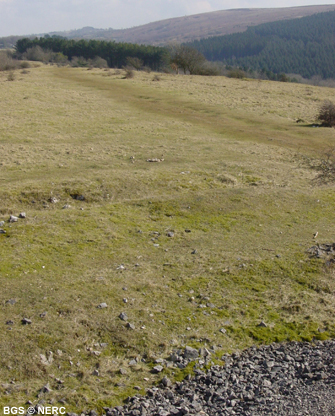
Typical Mendip habitats
Introduction | Unimproved limestone grassland | Acid dwarf-shrub heath | Ash woodland
Introduction

Long-established habitats usually support a much more diverse range of wildlife than those of more recent origin and the more important semi-natural habitats on Mendip have developed as a consequence of a complex interaction of underlying geology, soils, aspect, climate, and a range of other factors. The modern-day Mendip landscape also supports extensive areas of intensively-managed grazing pasture, particularly on the deep and fertile soils of the plateau. Agricultural 'improvement' has encouraged application of fertilisers and re-seeding with rye-grass and other palatable grasses, giving such swards a characteristic vivid green colour throughout the year. However, such grasslands have lost most of their original character and contribute little to the biodiversity of the area.
Many different habitats can be found in the Mendip Hills, but in the context of publicly accessible sites, three are especially characteristic:
- Home
- Overview maps
- Locality
areas
- Cheddar Gorge
- Charterhouse
- Blackdown
- Burrington Combe
- Shipham & Rowberrow
- Crook Peak & Axbridge
- Banwell to Churchill
- Priddy
- Harptree & Smitham Hill
- Draycott & Westbury-sub-Mendip
- Wookey Hole & Ebbor Gorge
- Wells
- Great Elm & Vallis Vale
- Mells & the Wadbury Valley
- The Vobster area
- The Whatley area
- Torr Works & Asham Wood
- Beacon Hill
- Stoke St Michael & Oakhill
- Holwell & Nunney
- Shepton Mallet & Maesbury
- Gurney Slade & Emborough
- The Nettlebridge valley
- Geology
- Minerals and mines
- Quarrying
- Caves and karst
- Biodiversity
- Detailed site information
- Acknowledgements
- External links
- Search
- Site map